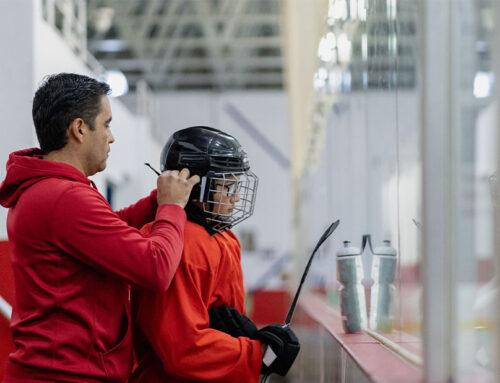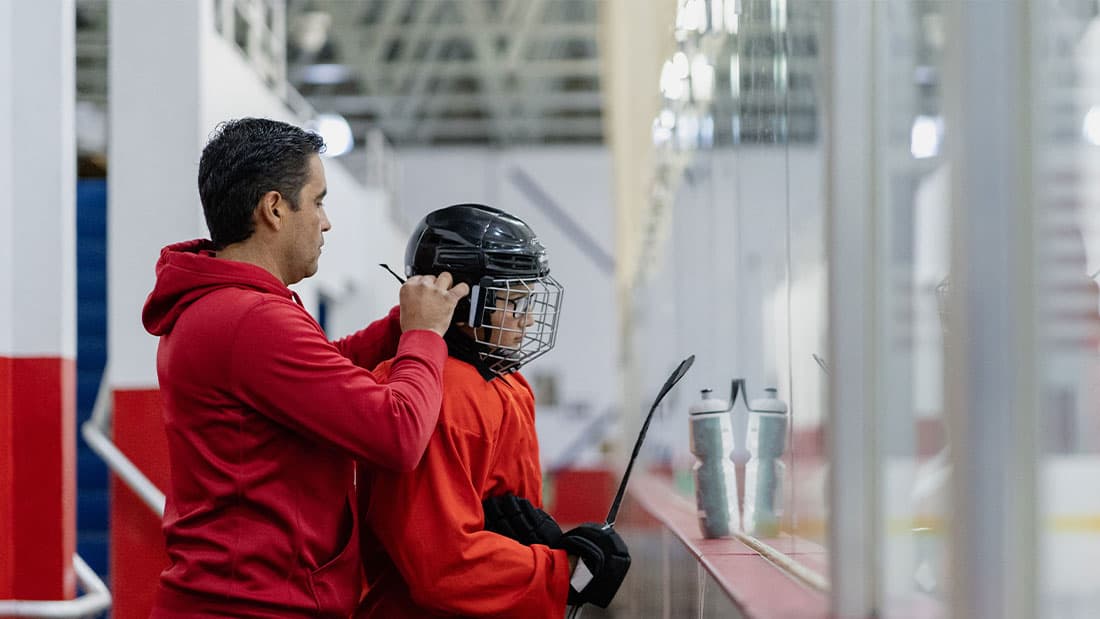How to Avoid Softball Pitching Injuries
Pitchers are at a higher risk for injury than other softball players because of the repetition and high intensity their jobs require. Failing to listen to your body and falling into bad habits that develop poor mechanics also increase injury risk.
Here are five of the most common errors in pitching form that cause injuries (with video), along with tips on how they can be avoided.
RELATED: Fastpitch Softball Pitching Tips for Beginners
Pitching Arm – Front of Shoulder Pain
Do you experience pain in the shoulder of your pitching arm? Keep your glove hand palm-down so you are less likely to “fly open” before release.
Keep your arm long but never lock your elbow during the windmill motion.
RELATED: Fastpitch Softball Pitching: 7 Keys to Success
Upper Back Pain – Either Shoulder Blade
If you have upper-back or shoulder blade pain, you are probably not getting your shoulders sideways. Staying straight (belly button toward your target) will cause the shoulder blades to pinch or crash, causing muscle knots and intense pain. Make sure you open your hips and shoulders. Proper foot placement and keeping your glove hand palm-down can prevent your shoulders from flying open.
RELATED: Baseball and Softball Pitchers: Protect Your Shoulders
Lower Back Pain – Glove Side
Experiencing lower-back pain on your glove side? You are crossing your drag leg behind your stride leg. This causes one side of your hip to drop, and the high side (glove side) to pinch with the spine, causing knots in the SI joint and a shooting pain down your leg.
Knee Pain – Stride Leg
With this type of pain, you are probably locking out and hyperextending your knee. To fix this, land with your toe striking the ground first so your calf muscle absorbs the landing and allows you to keep your knee strong without locking.
Treating Minor Pitching Injuries
Not all pain needs a doctor. Most injuries can be treated at home using the R.I.C.E. method (Rest, Ice, Compression and Elevation).
RELATED: Prevent Softball Shoulder Injuries With a Shoulder Prehab Circuit
Here is a quick way to diagnose and treat minor injuries.
Muscle Soreness (not in joints): Most common and can last 1-3 days.
Causes: Improper warm-up, games or practice are too long or intense, poor nutrition habits, dehydration.
Treatment: Rest, Ice and Nutrition Coaching.
Joint Soreness (elbow, shoulder, knee, etc.): It’s normal to experience occasional joint soreness, but if it is consistent, it’s usually a sign of poor mechanics or overuse. If not treated or corrected, it can lead to tendinitis or ligament tears.
Causes: Improper warm-up, prolonged use, poor mechanics.
Treatment: RICE or consultation with a professional pitching coach to troubleshoot poor mechanics
Minor swelling and bruising, and minor sprains and strains: These usually occur from a single action—jamming your finger, twisting your ankle, getting hit with a ball, etc. Most of the time, they heal in 3 to 5 days and you won’t see any bone deformation.
Treatment: RICE and over the counter anti-inflammatory medication. Get medical attention if you do not improve in a week.
Anything beyond the injuries above, seek medical attention.
RECOMMENDED FOR YOU
MOST POPULAR
How to Avoid Softball Pitching Injuries
Pitchers are at a higher risk for injury than other softball players because of the repetition and high intensity their jobs require. Failing to listen to your body and falling into bad habits that develop poor mechanics also increase injury risk.
Here are five of the most common errors in pitching form that cause injuries (with video), along with tips on how they can be avoided.
RELATED: Fastpitch Softball Pitching Tips for Beginners
Pitching Arm – Front of Shoulder Pain
Do you experience pain in the shoulder of your pitching arm? Keep your glove hand palm-down so you are less likely to “fly open” before release.
Keep your arm long but never lock your elbow during the windmill motion.
RELATED: Fastpitch Softball Pitching: 7 Keys to Success
Upper Back Pain – Either Shoulder Blade
If you have upper-back or shoulder blade pain, you are probably not getting your shoulders sideways. Staying straight (belly button toward your target) will cause the shoulder blades to pinch or crash, causing muscle knots and intense pain. Make sure you open your hips and shoulders. Proper foot placement and keeping your glove hand palm-down can prevent your shoulders from flying open.
RELATED: Baseball and Softball Pitchers: Protect Your Shoulders
Lower Back Pain – Glove Side
Experiencing lower-back pain on your glove side? You are crossing your drag leg behind your stride leg. This causes one side of your hip to drop, and the high side (glove side) to pinch with the spine, causing knots in the SI joint and a shooting pain down your leg.
Knee Pain – Stride Leg
With this type of pain, you are probably locking out and hyperextending your knee. To fix this, land with your toe striking the ground first so your calf muscle absorbs the landing and allows you to keep your knee strong without locking.
Treating Minor Pitching Injuries
Not all pain needs a doctor. Most injuries can be treated at home using the R.I.C.E. method (Rest, Ice, Compression and Elevation).
RELATED: Prevent Softball Shoulder Injuries With a Shoulder Prehab Circuit
Here is a quick way to diagnose and treat minor injuries.
Muscle Soreness (not in joints): Most common and can last 1-3 days.
Causes: Improper warm-up, games or practice are too long or intense, poor nutrition habits, dehydration.
Treatment: Rest, Ice and Nutrition Coaching.
Joint Soreness (elbow, shoulder, knee, etc.): It’s normal to experience occasional joint soreness, but if it is consistent, it’s usually a sign of poor mechanics or overuse. If not treated or corrected, it can lead to tendinitis or ligament tears.
Causes: Improper warm-up, prolonged use, poor mechanics.
Treatment: RICE or consultation with a professional pitching coach to troubleshoot poor mechanics
Minor swelling and bruising, and minor sprains and strains: These usually occur from a single action—jamming your finger, twisting your ankle, getting hit with a ball, etc. Most of the time, they heal in 3 to 5 days and you won’t see any bone deformation.
Treatment: RICE and over the counter anti-inflammatory medication. Get medical attention if you do not improve in a week.
Anything beyond the injuries above, seek medical attention.










